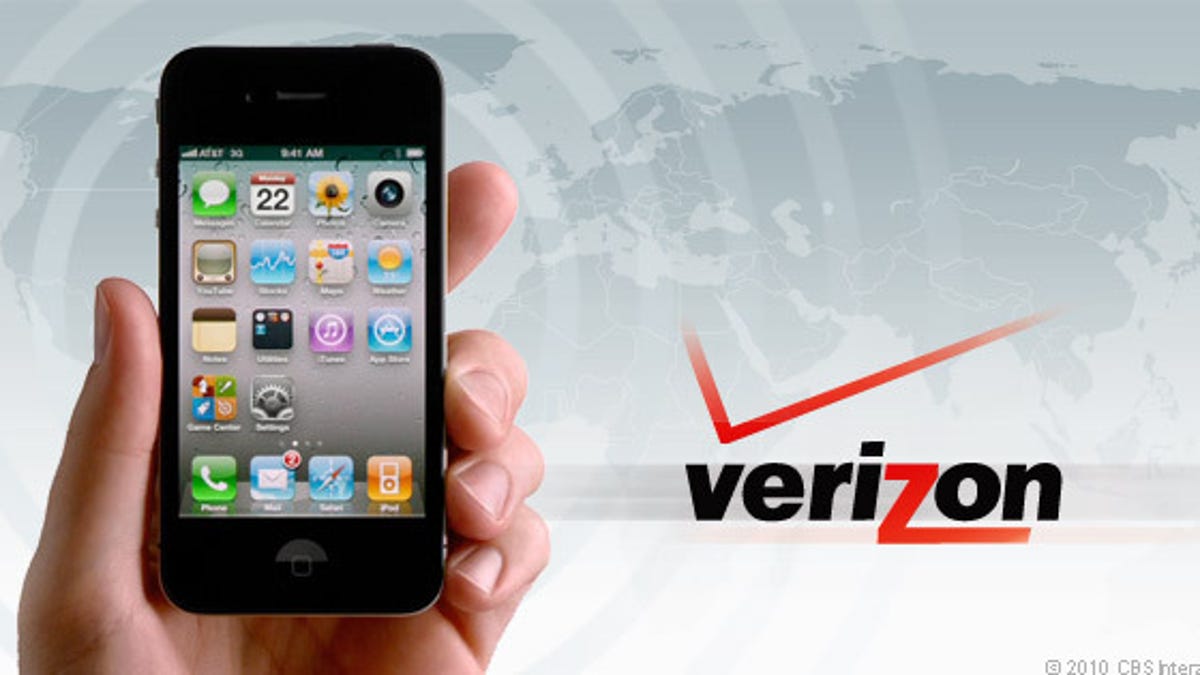7 things the Verizon iPhone doesn't have
The Verizon iPhone may answer some peoples' smartphone prayers, but it isn't without its caveats.

By now the Verizon iPhone is well-steeped in a potent mystique brewed of anticipation for an additional carrier on one hand and a bitter distaste for AT&T's coverage shortfalls on the other. Tomorrow, the once-fabled Verizon-powered iPhone will land in the hands of existing Verizon subscribers before opening up to new customers next week.
As wildly as the American populace has envisioned Verizon's iPhone to cure all mobile ills, there's still plenty that Verizon's iPhone 4 lacks on its newfound carrier.
1. 4G
Verizon launched its 4G LTE network this past December, but the iPhone 4 will not make use of top speeds at the outset. That puts the iPhone on both AT&T and Verizon's 3G networks, at least until Apple makes a version of the phone 4G-ready and deems Verizon's speedier LTE network sufficiently robust to handle the traffic.
The good news is that our field tests around San Francisco showed fast data upload and download speeds and nimbler load times on the whole than AT&T's iPhone.
2. SIM card
SIM cards store your carrier subscriber information on your phone. Since SIM cards are tied to carriers and not to the phone's hardware, they're also what makes it easy as pie to switch from one mobile phone to another on the same network--or from a carrier in your home country to one in a country you're visiting. Like all phones using CDMA technology, Verizon's iPhone has no SIM card, which means you won't be able to swap SIM cards at home or abroad.
3. Widespread overseas roaming
As mentioned above, Verizon uses CDMA technology instead of GSM. CDMA phones won't work in all parts of Europe or Asia, which are predominantly served by GSM. That said, there are countries outside the U.S. that do use CDMA bands, and Verizon is not without a backup plan for international travelers. The carrier does offer an international roaming rate that could include a loaner phone even while you use your usual number. A roaming program is one workaround for Verizon iPhone users. However, at the end of the day, the Verizon iPhone will not have the AT&T iPhone's more-seamless and extensive support as a world phone.
4. Online browsing while on a call
One of our biggest hangups is that as a CDMA phone, the Verizon iPhone won't have simultaneous voice and data at launch. That means you won't be able to check your e-mail, load a map, or look up something online while you're also on a call--you can only do one thing or the other. You can, however, text or look through static data that's already on your phone--your contact list, for instance. All other data-intensive actions, like loading a map, pauses for the call's duration and then continues after you disconnect.
Note that this voice-and-data limitation applies to Verizon's 3G data network. The carrier's 4G LTE network will be able to handle voice and data simultaneously (but it doesn't support the iPhone, yet). You also shouldn't have problems if you're on a Wi-Fi network, but one may not be consistently available when you're out and about.
The CDMA Development Group has said it will release simultaneous voice and data functionality to all CDMA carriers sometime this spring. Verizon has not announced, though, that it will deploy the change. If it did, the existing iPhone 4 would require a new hardware update.
5. Free hot spot
Verizon's iPhone does get one undeniable perk that AT&T's iPhone lacks: the ability to act as a mobile hot spot for up to five devices. But that will cost you an extra $20 per month.
6. A free case
Even if Apple hadn't closed its free case program this past September, an ever-so-slight change to the Verizon iPhone's hardware means that previously manufactured iPhone 4 cases won't snugly fit the new phones. That's a bummer for AT&T-to-Verizon switchers, especially since some of those cases easily run $50 to $90.
7. A white body
Ford Motor Co. founder Henry Ford once famously said that one could buy the Model T car in any color one wanted, just "so long as it's black." This also the case so far with the iPhone 4. AT&T customers have been waiting for a white iPhone since the smartphone first appeared, and so, too, will Verizon customers in search of a little stylistic difference. Spring is pegged as white iPhone season for both carriers.

